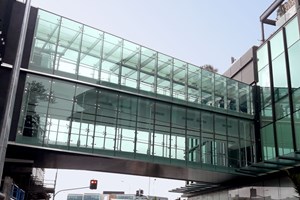Stainless Steel

Overview
Stainless steel is widely used in the construction industry - not only in fixings and bracketry due to its resistance to corrosion but more and more for its architectural aesthetic.
Contrary to the name, stainless steel is susceptible to staining in certain environments -particularly coastal or high humidity areas, where it will succumb to what appears to be a light surface coating of rust - technically known as 'tea staining'. This can be polished off, bringing the stainless steel back to its original finish but regular washing will also have a significant effect on reducing any staining.
There are many grades and surface finishes that are available pending on the environmental conditions it is expected to endure.
- 304 - Is used predominantly internally, where the finish is not subjected to extreme internal environments.
- 316 - Also called 'marine grade' used mostly for external applications or harsh internal environments.
- 445M2 - Is said to have better atmospheric corrosion performance than 316, not only from a saline environment but also from the likes of high sulphuric rich environments such as geothermal power stations.
- Decorative Finishes - There are many decorative finishes available in stainless steel, from linished, to embossed in tens of different finishes - including coloured stainless - which has no colour added - so has the same performance and durability and will never fade.
- Mesh - Various mesh spacings and gradings are available - often used in our mechanical louvre systems to prevent foreign objects entering beyond the louvre screen. It must be of high environmental durability to provide long lasting service in this building element.




